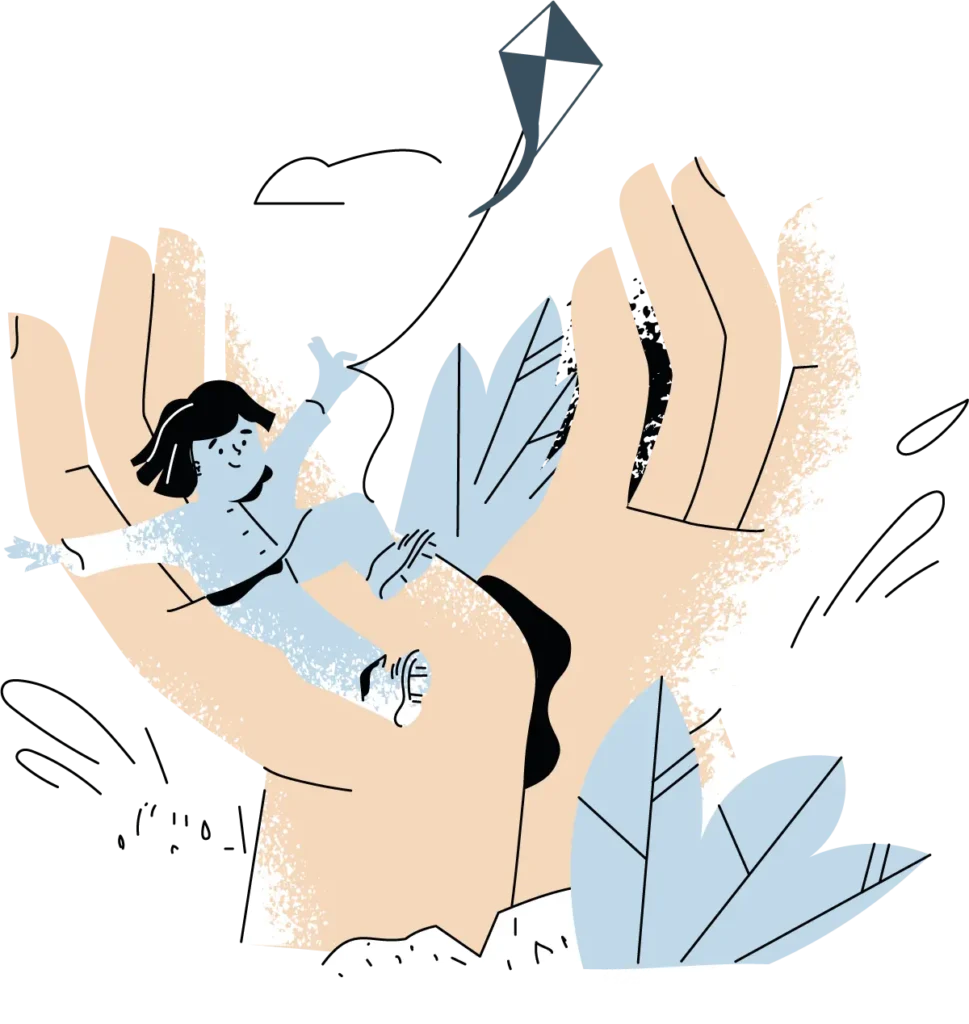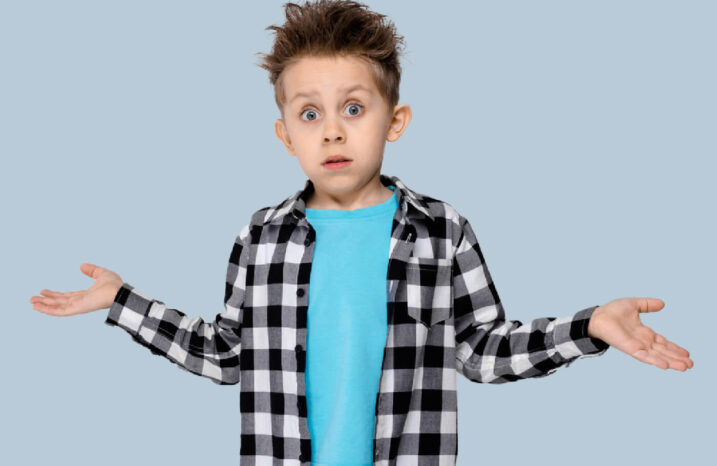What is Gesture Use in Childhood?
Gesture use in childhood is the ability to communicate with hands, arms, and body language.
Gesture use is interesting because it turns out that gestures are pretty crucial in terms of nonverbal communication. When a child gestures, they are doing this as a form of communicative intent. Kids gesture to ‘show you what they mean.’
When kids don’t gesture, it is a sign that they are not as concerned about sharing their ideas clearly with other people.
“Gestures are a method of getting others’ attention. Effective gesture use is a way to make sure your conversation partner gets it.”
Nonverbal communication is part of healthy social-emotional development. In social interaction and in forming peer relationships, it is helpful to use eye contact, body language, and gestures to show interest and engagement with other people.
Symptoms of Gesture Use Problems in Childhood
- Unusual eye contact: your child may be uncomfortable or unaware of how to use eye contact to communicate when talking or listening
- Walking away: your child may walk away mid-sentence during a conversation
- Comprehension: your child may have trouble understanding what others are saying or what they are reading in books. Although not well understood, research shows that gestures can be related to verbal comprehension
- Narrative coherence problem: your child may have difficulty telling stories that make sense. Research shows that children who are not great storytellers often do not use gestures to communicate
- Staring: your child may stare blankly while other people are talking, causing the communication to feel awkward or uncomfortable
- Tough ‘read’: your child may be hard to understand. People may say they aren’t sure how your child feels or how to ‘read’ their expressions to know what they want or need
- Flat expression: your child’s face may seem stoic, blank, or plain even when there are situations where strong emotions would be expected. For example, your child may have a blank expression when winning an award or getting the news that the family is getting a new puppy. This is often called ‘flat affect’
- Nervous: your child may get anxious or nervous when conversing with peers or adults
- Inattentive: your child may seem like they aren’t paying attention because they are not using nonverbal communication cues like gestures and eye contact
- Missing social cues: your child may get confused during social interactions due to misreading social cues.
Causes of Gesture Use Issues in Childhood
Anxiety: mental health concerns like excessive worry can lead to children having a very hard time with facial expressions, gestures, and eye contact. Sometimes anxious children will seem very stiff and serious in their communication style. You may notice anxiety in a stiff body posture and a lack of gesture use
Autism: interestingly, lack of gesture use can be a significant sign of autism. Particularly in very smart children with Autism Spectrum Disorder (ASD), a stoic, minimally expressive, or stiff demeanor is common. If your child is also struggling socially, perhaps with pretend play or interacting with peers, parents may want to consider an evaluation for autism
Mild trauma experiences (trauma with a small ‘t’): ‘small t traumas’ are seemingly small negative experiences that happen in the course of childhood. A child’s long-term mental health can be impacted even with a more common distressing experience, such as family strife, school change, loss of a pet, or peer drama. If your child seems flat emotionally, it will be important to get curious about what could be happening internally. Often, small t traumas cause significant and ongoing stress that can lead to poor coping mechanisms and persistent emotional regulation problems. Sometimes issues with nonverbal communication such as facial expressions, eye contact, and gestures, can be explained by these traumas. In this case, trauma treatment is required to help your child develop improved communication skills and emotional expression.
Significant trauma experiences (trauma with a capital ‘T’): ‘big T traumas’ are events that cause a significant threat to a child’s safety or sense of self-worth. These traumas include experiencing domestic violence, witnessing the death of a loved one, extreme bullying, or a sudden change in caregivers. It is very common for children to have significant emotional issues after experiencing traumatic events. If the child becomes traumatized or depressed, poor non-verbal communication is fairly common. The child may seem stiff, overly serious, and stoic in communication with others. Care for children with big t trauma experiences must be provided by experienced clinicians who are experts in trauma-informed care.
What to Do About Gesture Use Issues in Childhood
Children who do not use gestures may have other communication challenges. They may struggle to tell stories that make sense. People may get very confused as they listen to your child talk. If there are other issues, such as poor eye contact, limited emotional expression, and stiff body language, social skills will suffer. These social challenges may appear in the classroom and at home.
Setting up the environment for success is important for these children. As a parent, it is equally important to be gentle and compassionate toward yourself. Kids who are struggling to communicate can be challenging. Be patient with yourself and your child. Create a safe and warm environment where your child can feel more comfortable making eye contact and communicating openly with you.
Sometimes, these issues with gestures are not of urgent concern. Kids may go through periods where they just don’t feel comfortable gesturing and communicating openly and this does not always lead to other issues. The reason to be concerned is if your child is experiencing multiple types of distress emotionally, behaviorally, or socially.
The Top 5 Things Parents Can Do to Help a Child with Gestures
- DO keep listening. Often kids will pull away or avoid communication with you for a while. They may later be willing to tell you about their feelings on their own terms. Be patient and stay open to hearing their thoughts
- DON’T pepper your child with questions. Kids who have some nonverbal communication issues may need a little more space and time to unwind. Do not incessantly ask your child what he thinks or feels. Instead, offer your own insights and leave room for the child to join you. For example, you might say, “Wow, that was a little scary when those cars almost crashed in front of us.” Making comments like this can normalize emotional experiences and give a child an opportunity to open up
- DO play charades. With kids a great way to work on gestures is by playing games like charades, ‘gestures,’ or ‘head’s up.’ These games make using gestures fun. In our clinical work, we have noticed that children who don’t frequently use gestures will improve after playing games like these
- DO get over it. There are times when kids just simply aren’t comfortable with gestures or other forms of communication. Give your child and yourself a break. It is okay to take some space and to offer your child some space as well
- DO cut yourself some slack as a parent. It is natural that our kids will have some challenges in communication or social interactions at certain points in life. Stay supportive of your child and remember that none of these tough times will last forever
When to Seek Help for Gesture Use Issues in Childhood
You may need more help if your child’s problems are more severe, resulting in getting in trouble at school for not paying attention, a withdrawn or sad demeanor, or poor social skills.
Sometimes a thorough assessment is the key to determining specifically what types of therapies and supports will help your child thrive.
Professional Resources on Gesture Use in Childhood
If your child is struggling with this symptom to the point that it is getting in the way of their learning, relationships, or happiness, the following professionals could help. They may offer diagnosis, treatment, or both.
- School psychologist: to help with the learning problems, attention, or emotional issues at school that may be associated with nonverbal communication including gesture use
- Psychologist or neuropsychologist: to understand whether or not a diagnosis such as autism, anxiety, or giftedness underlies your child’s challenges. A testing psychologist can evaluate cognition, social skills, emotions, and behavior and determine if a diagnosis is relevant to the issues with nonverbal communication and gestures
- Psychotherapist: to help your child understand what is coming up for them emotionally. A psychologist, social worker, or licensed professional counselor can teach your child to manage and communicate feelings, including nonverbal communication and gestures
- Speech therapist: to help your child learn nonverbal communication skills such as eye contact, facial expressions, body language, and gestures
Similar Conditions to Gesture Use Issues in Childhood
If your child is struggling with a similar problem not directly addressed in this section, see the list below for information about other related symptom areas.
- Social skills problems: your child may have trouble socially due to a lack of insight into their own emotions or awareness of the feelings of others.
- Communication problems: your child may have difficulty communicating reciprocally with others both verbally and nonverbally
- Rigid behavior: your child may seem somewhat stiff or serious. They may insist that the day has to go a certain way
- Anxiety: your child may get very nervous or worried and this may lead to a somewhat flat expression or tendency to avoid communication with others
- Narrative coherence: your child may have difficulty telling stories that make sense. This issue is commonly associated with lack of gesture use
- Verbal comprehension: your child may have difficulty understanding information in conversation or in books they read
Book Resources for Gesture Use Issues in Childhood
Siegel, Daniel J. & Bryson, Tina Payne (2012). The whole brain child: 12 revolutionary strategies to nurture your child’s developing mind.
Greene, Ross W. (2001). The explosive child: A new approach for understanding and parenting easily frustrated, chronically inflexible children.
Kroncke, Anna P., & Willard, Marcy & Huckabee, Helena (2016). Assessment of autism spectrum disorder: Critical issues in clinical forensic and school settings. Springer, San Francisco.
Purvis, Cross, & Sunshine (2007). The Connected Child. Bring hope and healing to your adoptive family.


